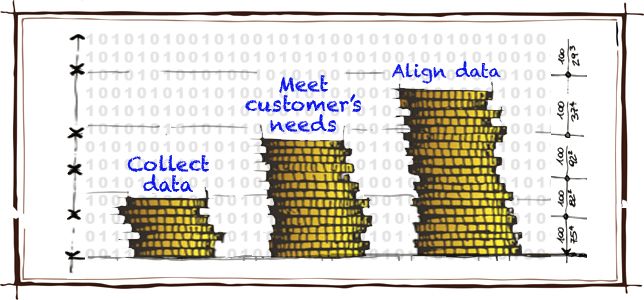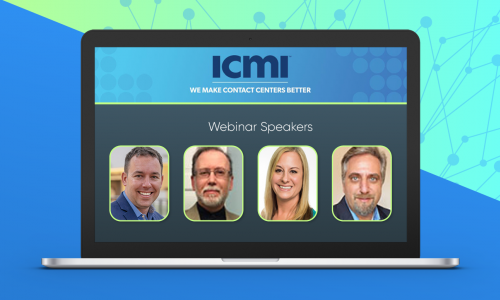Historically, contact centers have been viewed as cost centers. While operations and procurement leaders have often focused on reducing the number of conversations or cutting down the time it takes to sort through a customer’s issue, many of the world’s leading customer experience brands have turned their contact centers into profit hubs by leveraging Big Data to better understand their customers’ needs.
Building out capabilities to collect, analyze, and manage Big Data from multiple customer channels is the new imperative for providing differentiated customer experiences while driving intelligent improvements to your business’ bottom line.
Businesses equipped to handle and properly organize data flowing in, read and store customer preferences and deliver tailored treatment strategies as a result, not only empower their front line to have more intelligent conversations with customers, but also entrust their contact centers with strategic revenue generation and marketing initiatives.
The best contact centers are no longer instruments designed to handle support calls, but rather profitable customer collaboration hubs equipped to sense and proactively respond to customer issues.
But many companies still struggle, asking themselves “How can we leverage data for increased customer loyalty and increased sales? “How can we get customer data and more relevant information to the customers to spur greater sales?” and, “How can we make the customers’ experience more seamless?”
The answers await them on the front lines. Don’t let data sit on the sidelines in your contact center. Here are three tips for driving profitability through the contact center utilizing existing data.
- Data in, revenue up. The best customer experiences are the ones that don’t happen. Using predictive analytics to anticipate each customer’s needs and proactively offer relevant solutions before issues flare up, is what makes companies like American Express, Amazon, and Zappos such trusted institutions. A great example of how this impacts both loyalty and sales is Three Mobile. After I had taken a few international trips with resulting large data roaming charges, Three Mobile contacted me to right fit my plan, rebated me two months of overages and began proactively pushing me text messages when I touched down to alert me I was roaming on another network and offering to activate my reserve of unlimited data days. By applying predictive analytics, the right KPIs and technology, companies are better positioned to boost conversion rates, improve customer service, and increase upsell, cross-sell opportunities in real time. The sum of many experiences like mine ultimately increases total customer value and drives long-term growth.
- Don’t sell customers more stuff; give them what they need. Customers are more than a series of 1s and 0s and while traditional segmentation is a powerful tool for guiding strategic decisions, it is essential to have a deeper understanding of individual preferences when building a one-to-one relationship with a customer. A strong Closed Loop Quality team can collect and analyze common customer DSAT triggers, Net Promoter® feedback, and unstructured data from social networks to add to binary CRM data and demographic information. With this complete picture, you can avoid the mistake of giving customers what you think they want. Use this insight to increase sales activity and conversion rates through the contact center, while creating value for customers in a way they expect. Health insurance provider Cigna, for example, has created a culture of listening across all channels from the contact center. Eric Galvin, senior director of service operations at Cigna, said that by listening to customers Cigna demonstrates that it wants to build a relationship of trust. “We want to understand each customer's unique needs so we can deliver solutions relevant to their personal health."
- Align data with organizational changes. Aligning your organization around the same data initiatives is one of the biggest challenges companies face today. But, successful data integration can have a huge dollar impact for companies. When organizations are aligned around the same KPIs, they can more easily engage with customers across channels, gain a seamless view of their conversations, analyze them, and systematically merge them with CRM data. Having these capabilities closes the loop on organizational improvements and listening to voice of the customer.
Alignment is a key step in any change management initiative and is especially important to an organization that is trying to better govern and manage data. The contact center must be included as a key stakeholder in the analysis framework for true enterprisewide alignment. An operational governance model should also be implemented, with a single point of contact from the contact center responsible for customer data. Once these elements are in place, your contact center should soon be considered a profitable business center where valuable customer data lives and thrives.
Net Promoter is a registered trademarks of Satmetrix Systems, Inc., Bain & Company, and Fred Reichheld.







